- How can I disguise my electric box in my yard?
As much as you may detest the ugly utility box, don’t cover it. You can drop a fence around it that has aesthetically pleasing visual interest, but follow the same rules for access as for planting greenery.
- Can you landscape around a utility box?
Electrical transformers need special consideration. Keep 4 feet of distance on the sides and 10 feet of clearance in front (the side with the lock is the front). The clearance is necessary in order for the utility workers to access the box from a safe distance. If you’ve ever been near a transformer box that exploded, you’ll understand the danger they present.
- What can I plant around my utility box?
A hedge can go in the back, but don’t plant trees. Respecting the need to access a box, consider tall grasses around the sides.
Don’t use plants that need raised soil or have prickly thorns. If you block access, you will probably be hearing from your local utility company.
Even if you don’t have to worry about a single underground wire, you’ll find ideas here about how to hide trash cans and cover other things that can clutter your backyard landscaping.
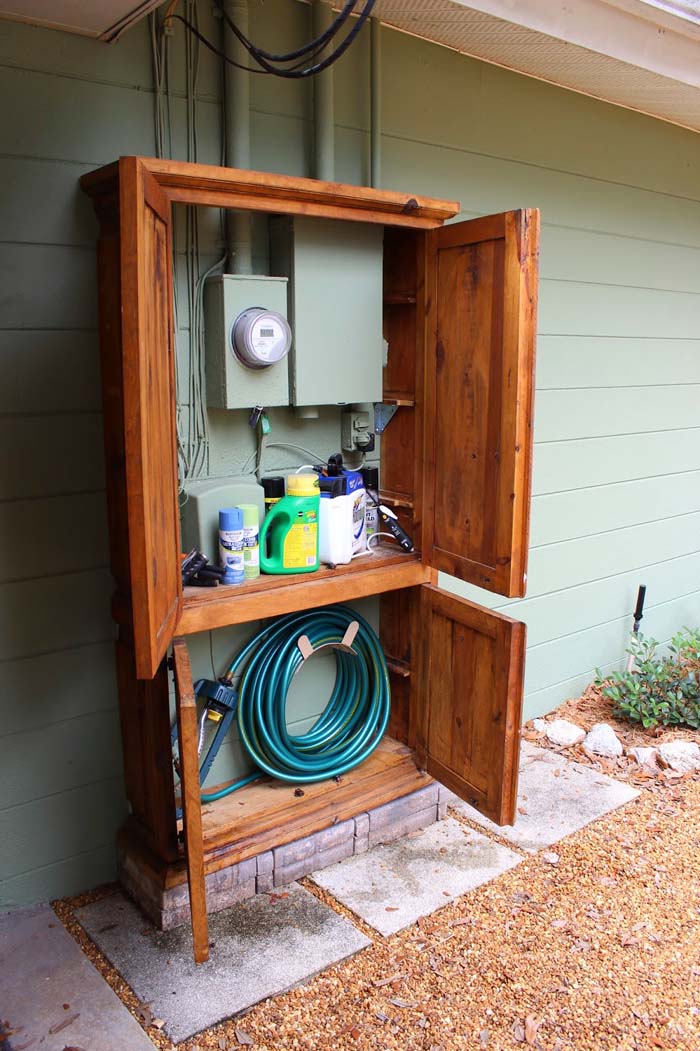
Here’s a great way to repurpose an old wardrobe or kitchen cabinets. Cut them in half lengthwise, remove unnecessary shelves, and raise it off the ground using pavers and bricks.
The top has also been cut out to accommodate wires.
via Shabby Glam
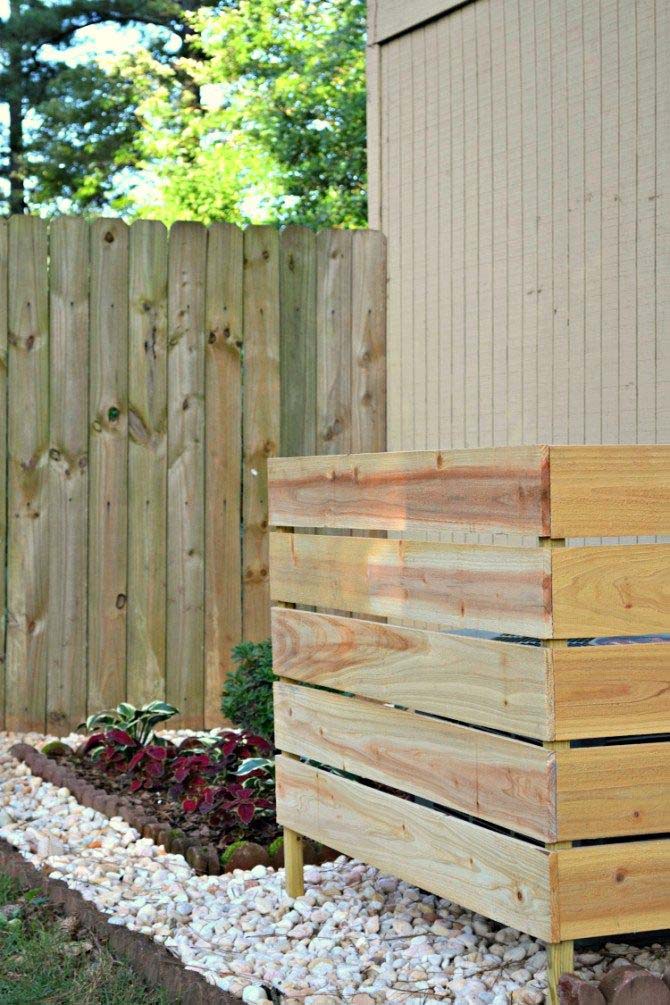
There are fewer rules for hiding HVAC machines. Like transformer boxes, your design still needs to allow air to circulate around the machine.
A simple box style fence can be made from rough lumber. Slats are a nod to old market fruit crates.
via Ugly Duckling House
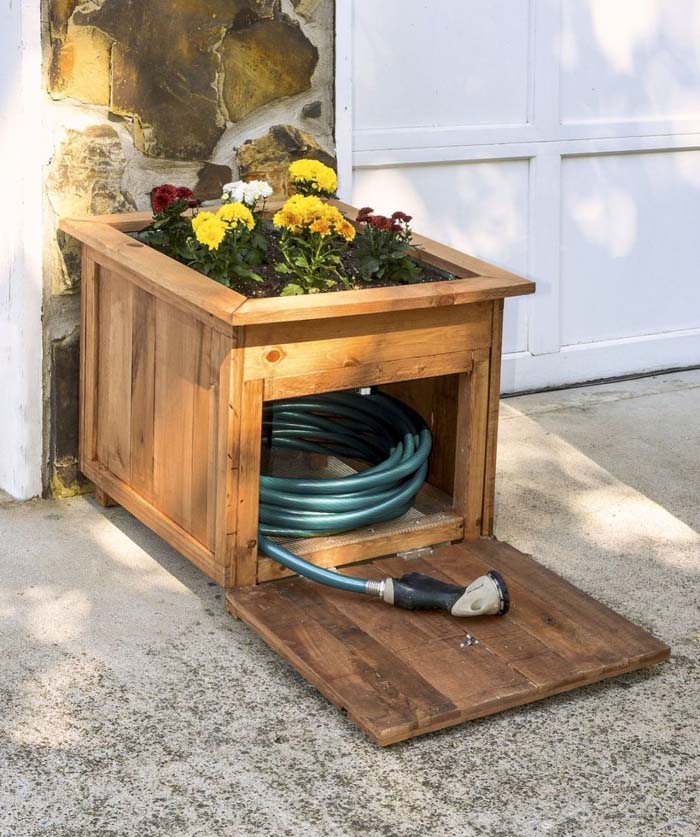
Take the basics of building a planter, close in the bottom, and add a door.
To avoid awkward issues with hinges, the door drops down instead of sideways.
via DIY Candy
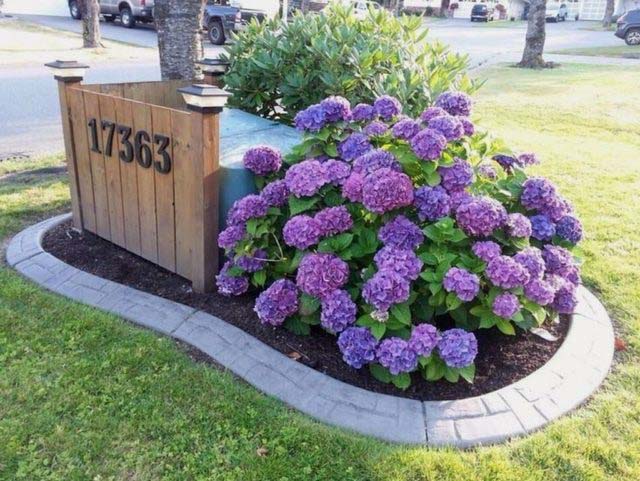
A tree and botanicals hide three sides of this utility box. A floral bed with hydrangeas hides one side, a shrub and tree on two others. Added on to that, a basic mini privacy fence complete with house number and lamp posts.
While it looks beautiful, this is exactly how not to hide a transformer.
This was created to fit in with the owner’s landscape design, but the effort may be wasted if this is, indeed, a transformer box or cable box. If utility workers ever need access, it will all be removed.
via Start at Home Decor
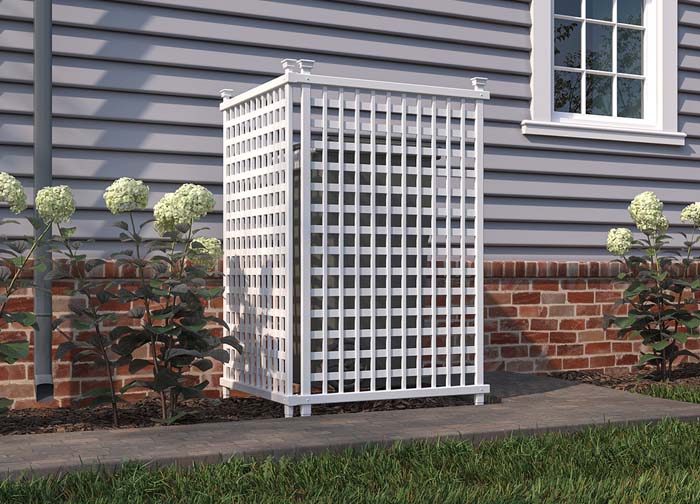
Use lattice screens in the same way you would a privacy or decorative fence. This is set up for hiding a trash can, so you only need a lattice barrier on two sides.
The third side is left open to remove the container easily.
via Walmart
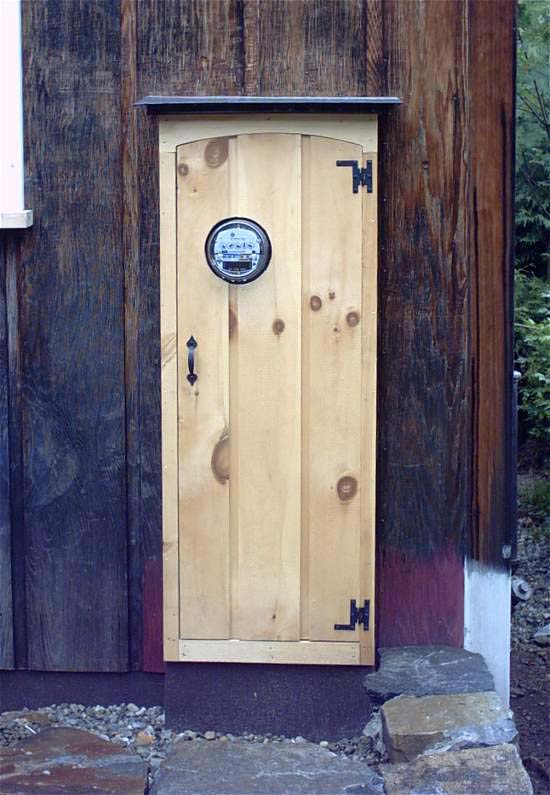
A utility box cover is built to look like a vintage cabinet with a hole cut out for the meter.
It would look right at home, hanging on the side of an old house. You can build something similar with reclaimed lumber. Any utility worker that needs to read this meter or access the electrical box will appreciate the effort.
via Electrical Contractor
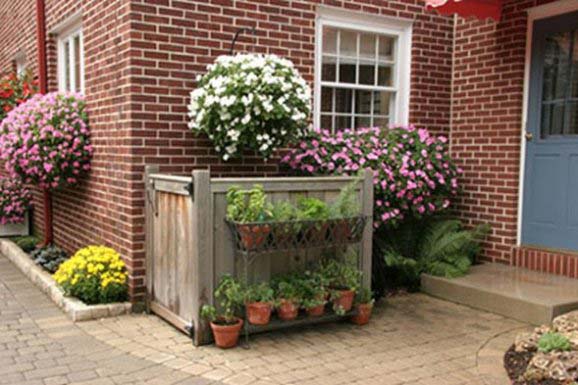
The owners took the idea of a garden gate up a notch by adding potted plants on the side.
This makes it easy to swap them out and prevents heavier layers of dirt from weighing down the side.
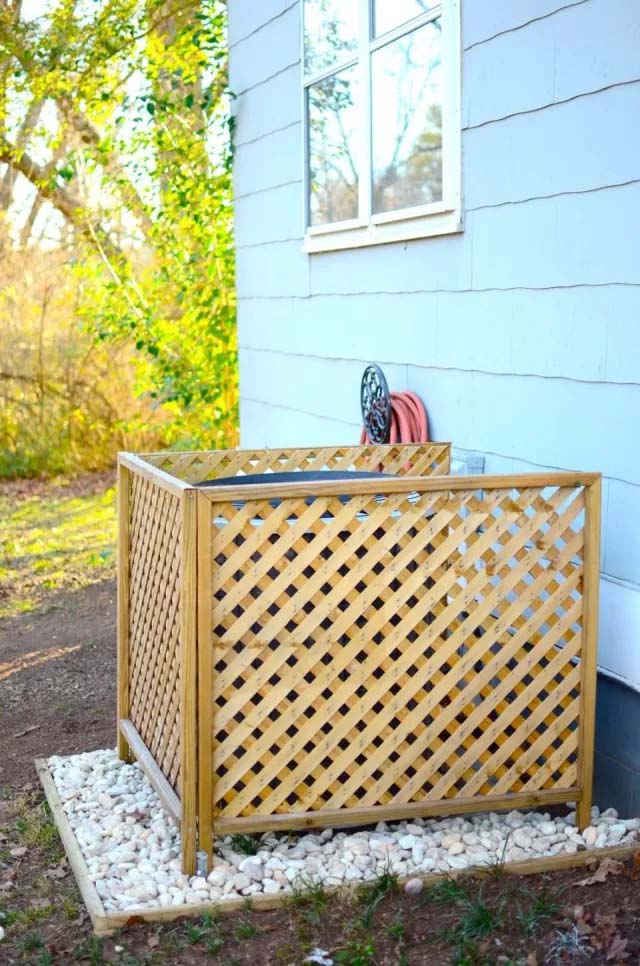
A three-sided lattice screen is easily set up and can be modified to be a single structure, or with a hinged gate.
Choose a design with an easy opening if you need to access, say, the garden hose or trash cans.
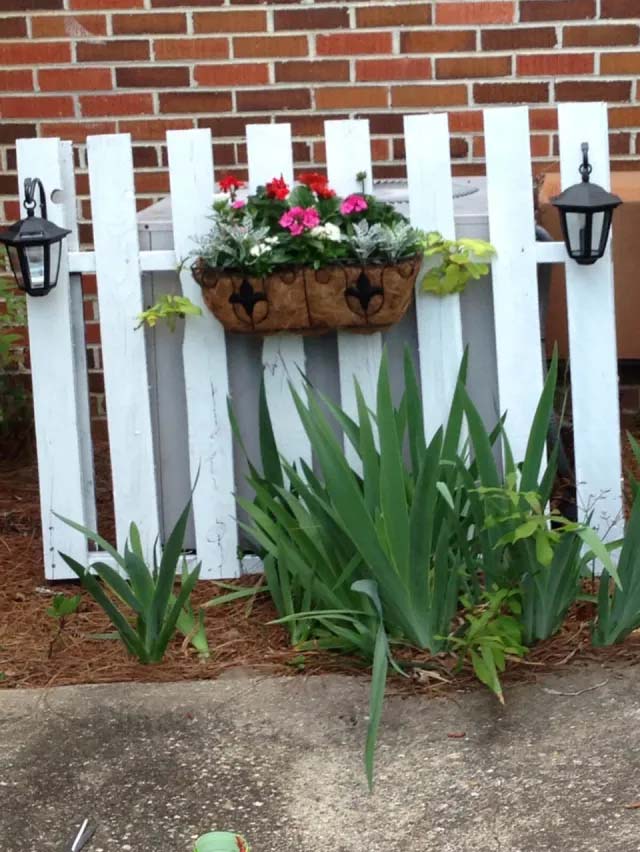
A picket fence is an easy choice when you already have picket fences as part of your backyard landscape.
The cute little lanterns add to its charm, as does the coconut grass hanging planter, which is a lighter option than window boxes
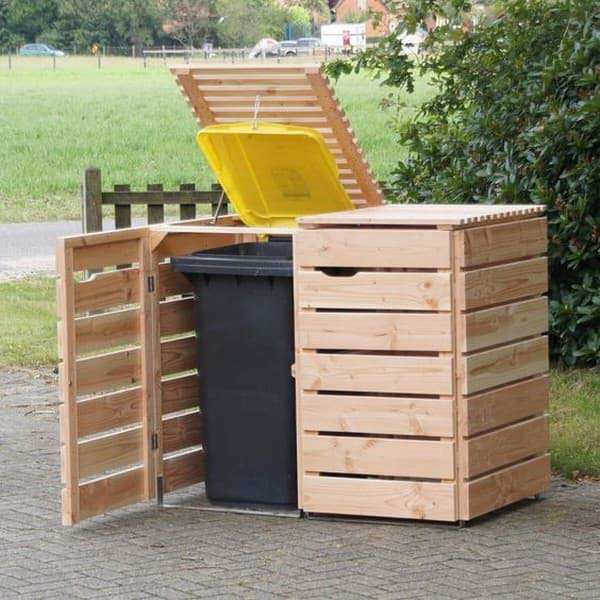
A sleek design provides easy access from the front and from the top.
You can drop in bags during the week without having to pull the entire container out from its enclosure.
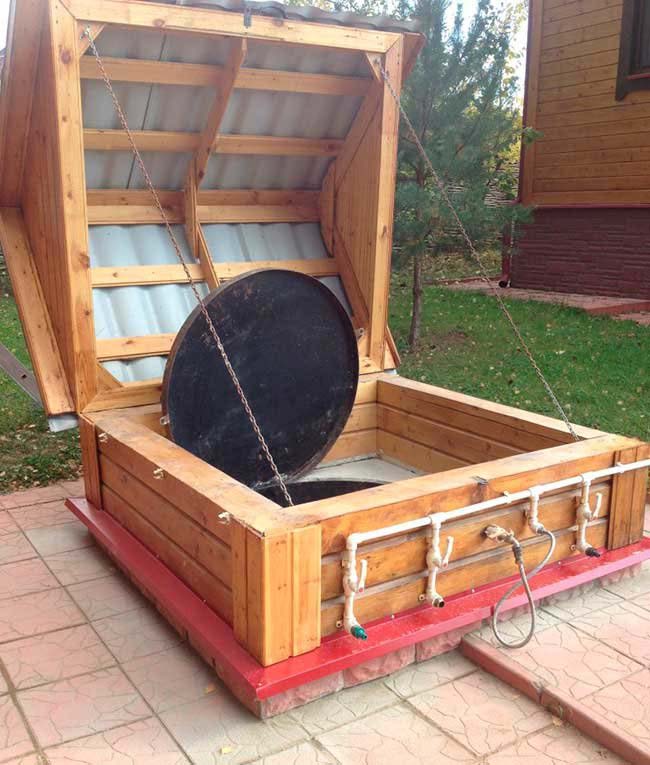
When you have a well water system such as this one in your backyard, a unique way of accessing and covering it is to make it look like a dog house or treasure chest.
The PVC plumbing and spigots need to be accessible on a regular basis, but they look less obtrusive when fashioned against this structure.
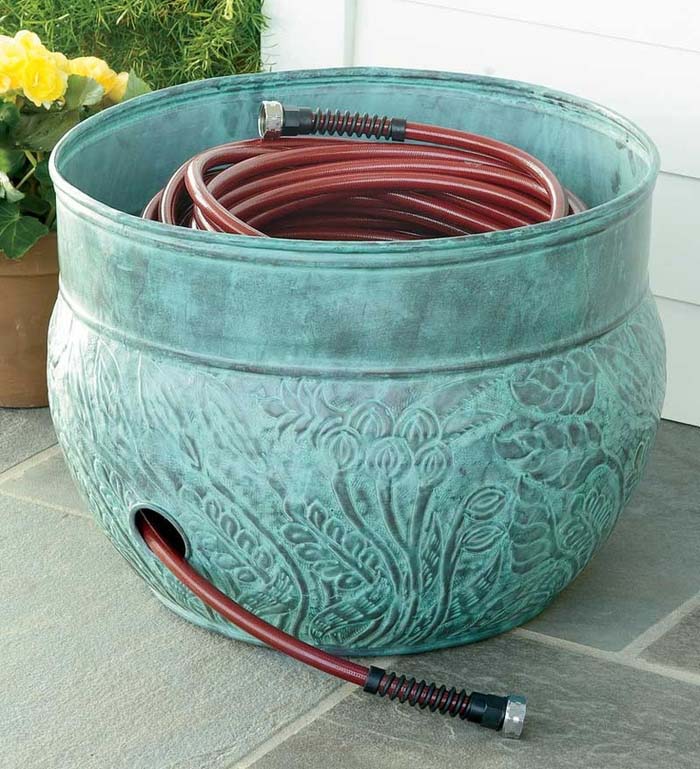
An old large planter gets new life when it’s repurposed as a container for a garden hose. In fact, it doesn’t have to be an old planter. You can take a new or plastic planter with a decorative motif and paint it to suit your patio decor.
The hole at the bottom can be drilled out, or it can be accomplished on a plastic planter using a soldering gun. It’s a storage idea that can be used to store anything anywhere in your yard.
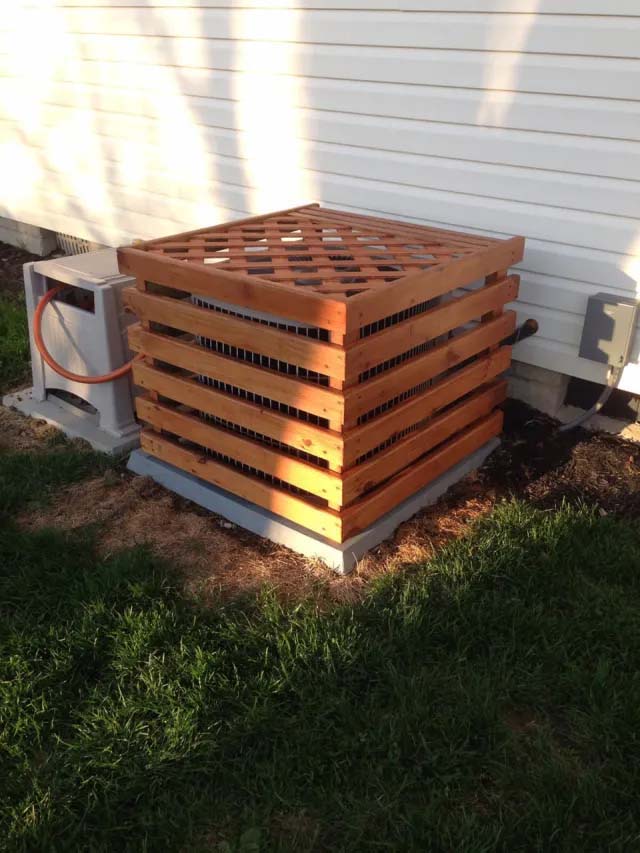
The design of the slats ensures that the cables are still accessible. You do not have to do anything except slide this out to access the HVAC compartment machine.
This gives you easy access for cleaning the fans without any doors or hardware.
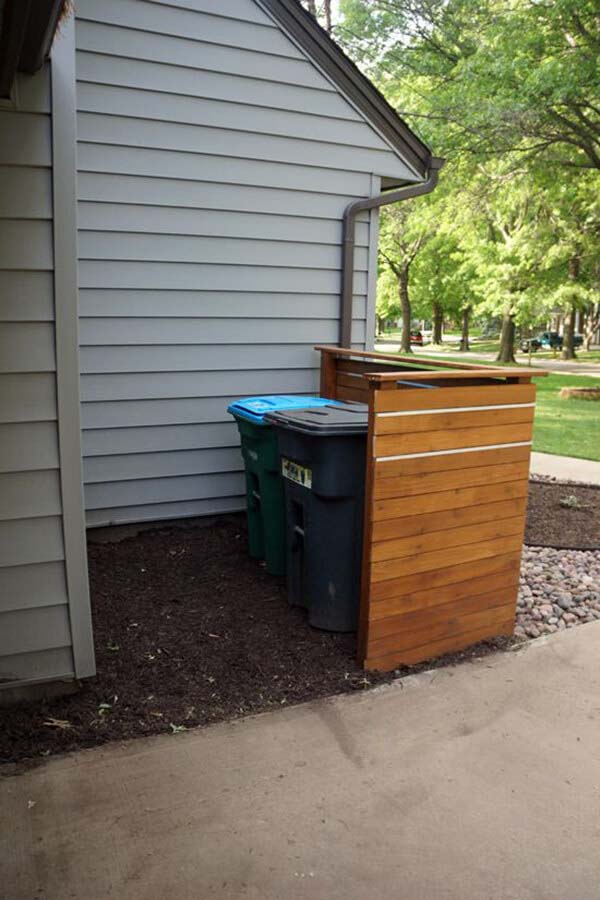
Cedar was used to create a corner barrier. It looks like it matches the rest of the home’s fencing.
It makes smart use of an awkward corner. Even bikes can hide back there.
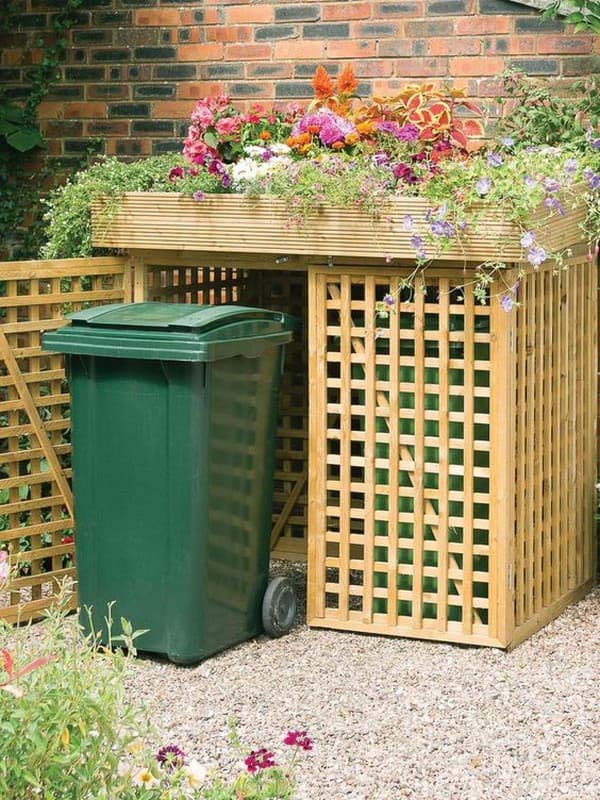
Here’s a larger version of the planter we saw earlier that held a garden hose.
This can be built with a low fencing section. The top is obviously more sturdy and you will need more support for the top to ensure it doesn’t collapse inward.
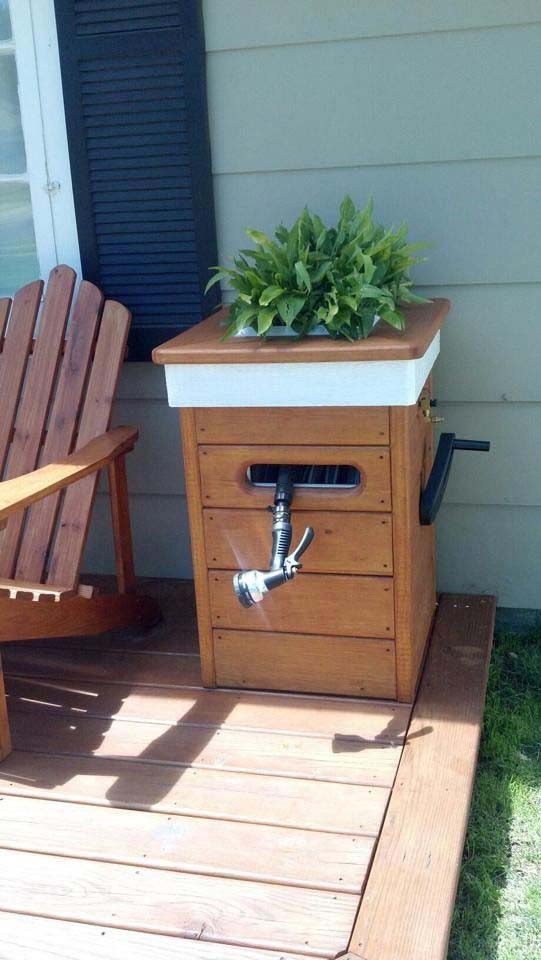
This garden box is custom built to allow the hose to be connected permanently to the outdoor spigot. It’s on a spindle so that it can be pulled out easily.
The solution for winding it back up is to attach the handle to the outside of the box.
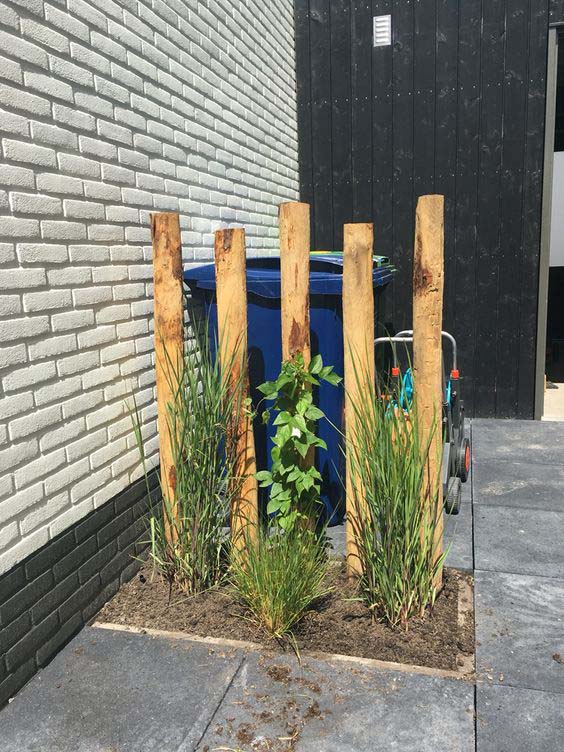
Two tile pavers were removed, and the space was lined with wood. Five simple strips of lumber were embedded into the ground.
Vertical greenery, such as trailing ivy and tall ornamental grasses, can be planted. They will eventually fill in and provide a natural cover up to the trash cans and garden tools.
This is a good solution when the ground is uneven, as we see the tiles are slanted away from the home. This is an advantage for keeping water away from the foundation.
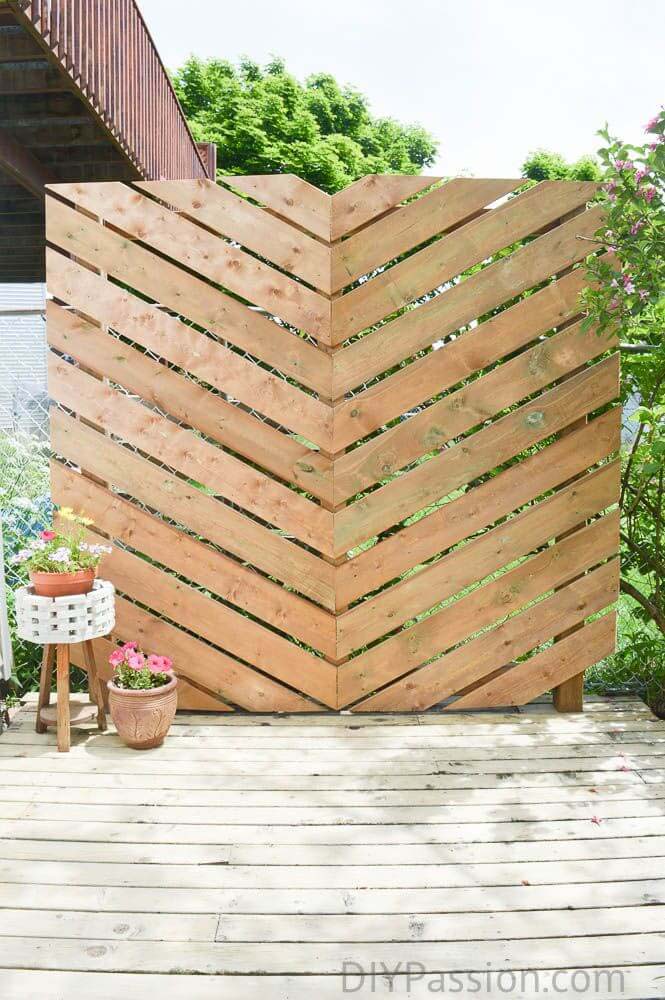
This isn’t just a great solution for hiding utility equipment.
This herringbone style privacy fence can hide the neighbor’s trash bins sitting on the other side of the chain-link fence.
via DIY Passion
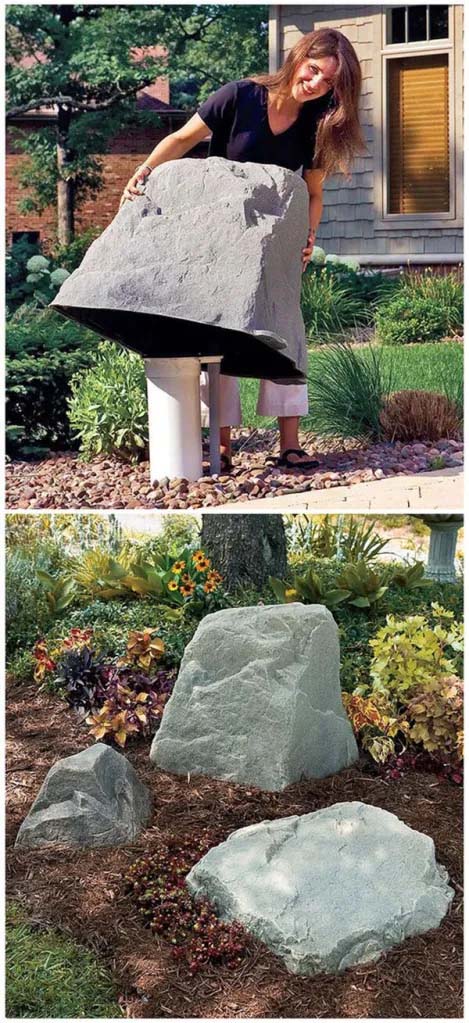
Here’s a new take on the old idea of hiding a spare key under a garden rock. Evolving landscape ideas created a demand for faux boulders and large fake rocks.
Now, you can buy a faux rock designed specifically for hiding the backflow enclosure that’s sitting in the middle of your mulch bed.
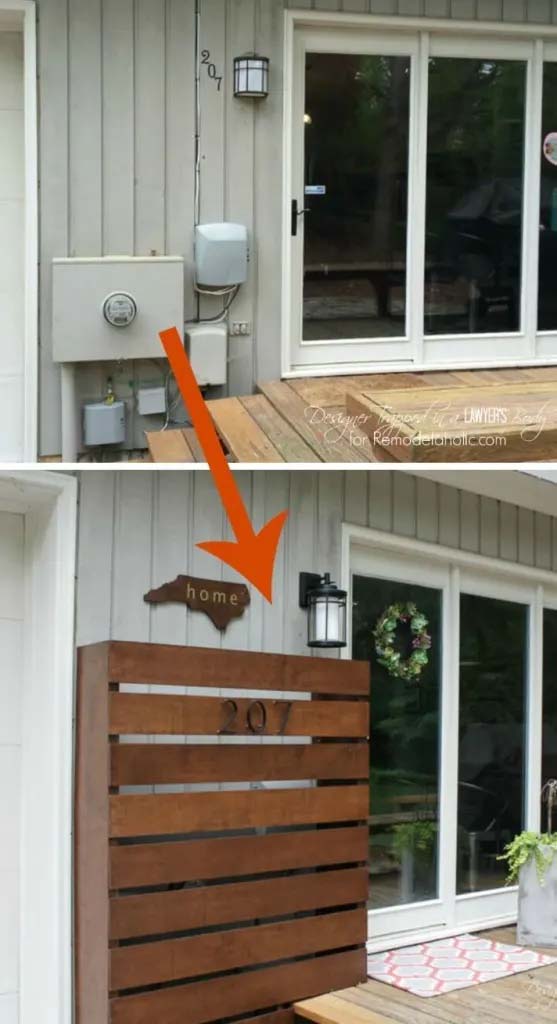
When you have an entire wall full of utility boxes, it’s sometimes difficult to know how to cover them. The solution here was to make a fence and secure it with cleats.
The cover slides away from the stairs when it needs to be accessed.
via Remodelaholic
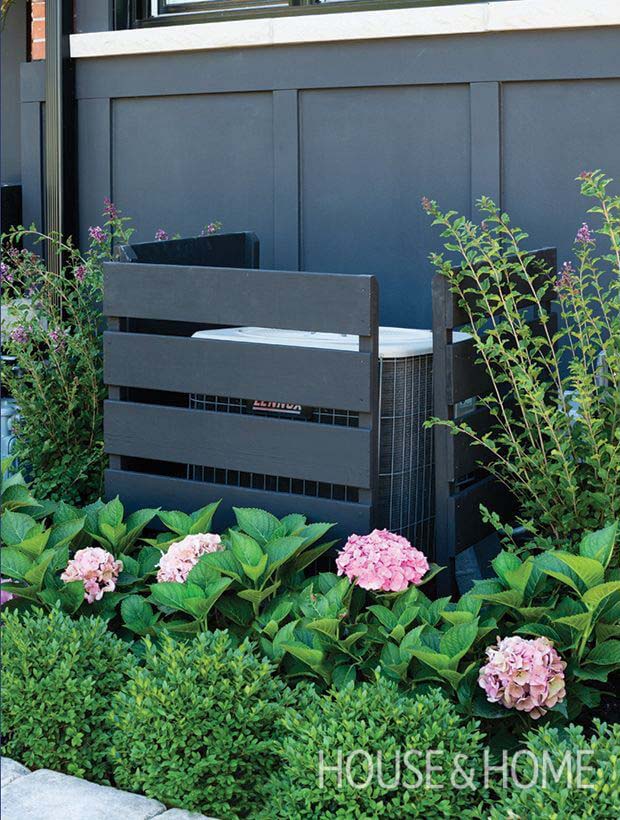
An easy way to make a utility box cover blend with your home is to just paint it the same color as your home decor. This AC unit wound up in the middle of the garden bed alongside the house.
The front panel is removable for more access. This is ideal for front yard landscaping, too.
via House & Home
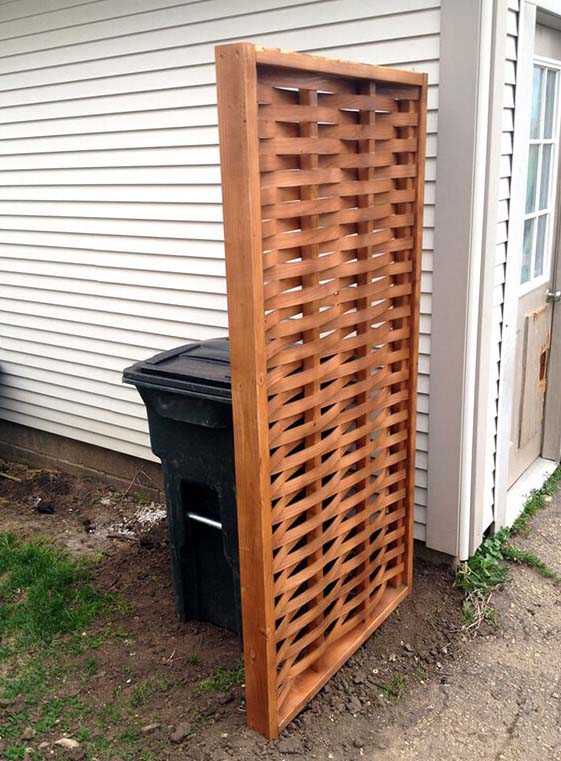
The simplest way to hide a single trash can is with a simple sliding fence section.
It will need to be secured into the ground or to the house to keep it from falling over, but this basket weave solution is decorative and easy
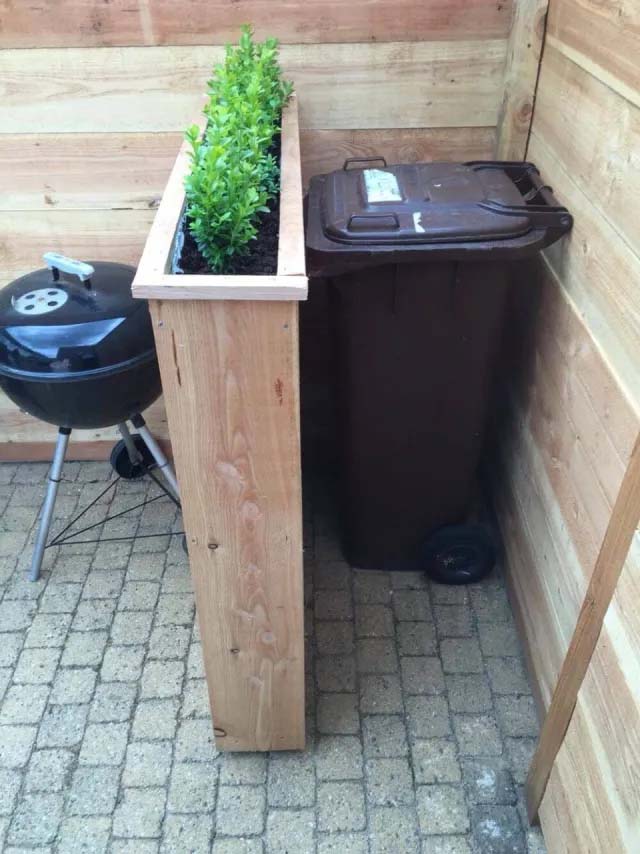
At first glance, it looks like there’s no easy way to move this trash can. That is until you notice that the planter partition doesn’t rest on the patio.
By putting the separator on wheels, it can roll out of the way when you need to wheel the can to the curb.
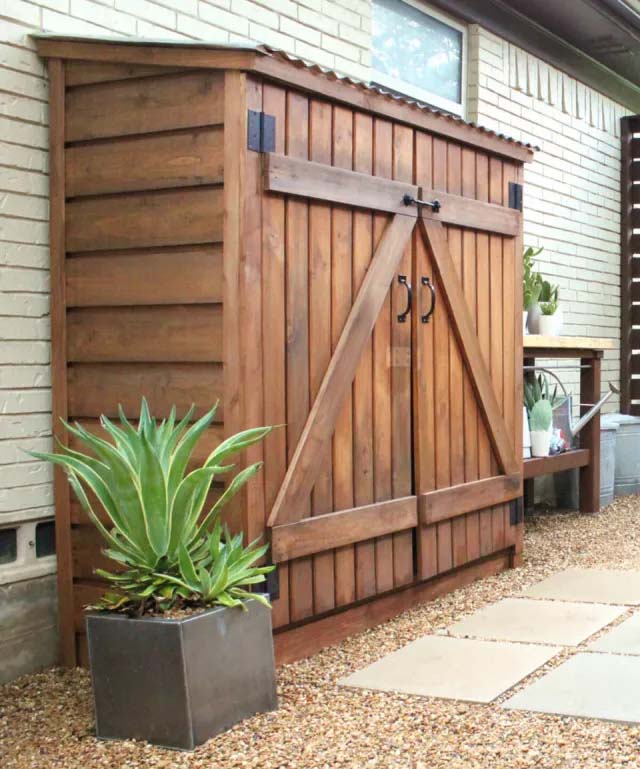
Sheds that are only half the length of a standard storage shed have become commonly available. This mahogany shed, which is about six feet high and three feet deep, would take hours to build.
We like the pitched roof for keeping rain water from accumulating behind the structure.
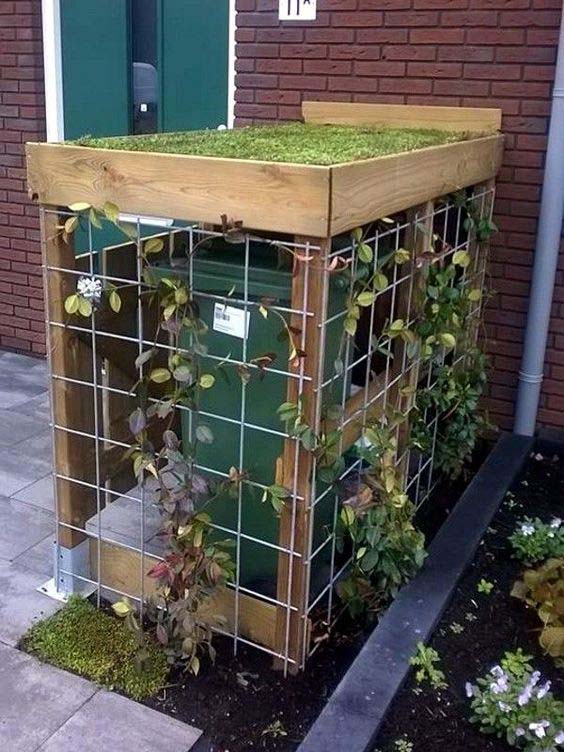
If you’re not fond of the idea of a brown box in your garden, consider building a wooden structure with a wire trellis and planting trailing foliage at the base.
The advantage to this style over an enclosed box is it allows heat and odors a way to escape.
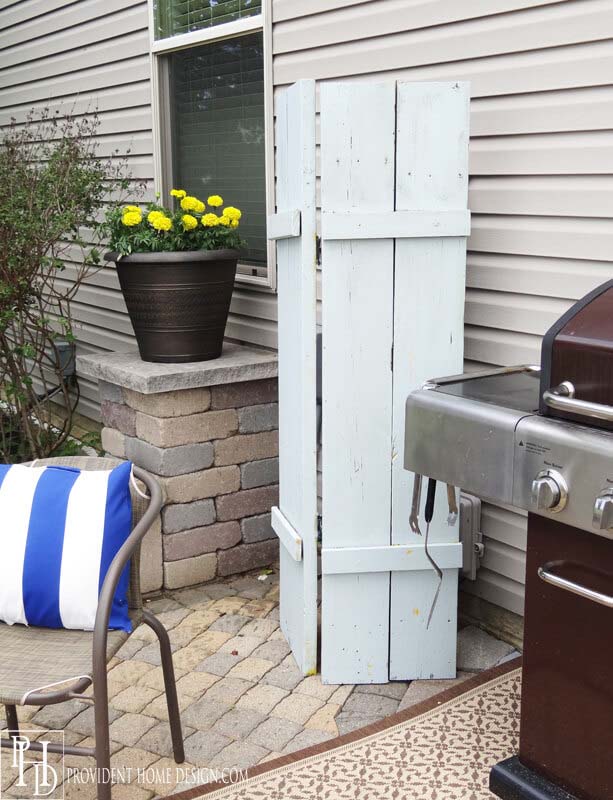
Using a bi-fold partition is the most dead-simple way to hide a small utility box or other small outdoor eyesore.
Use scrap wood with a couple of hinges, whitewash the boards and you’re done before your company arrives.
via Provident Home Design
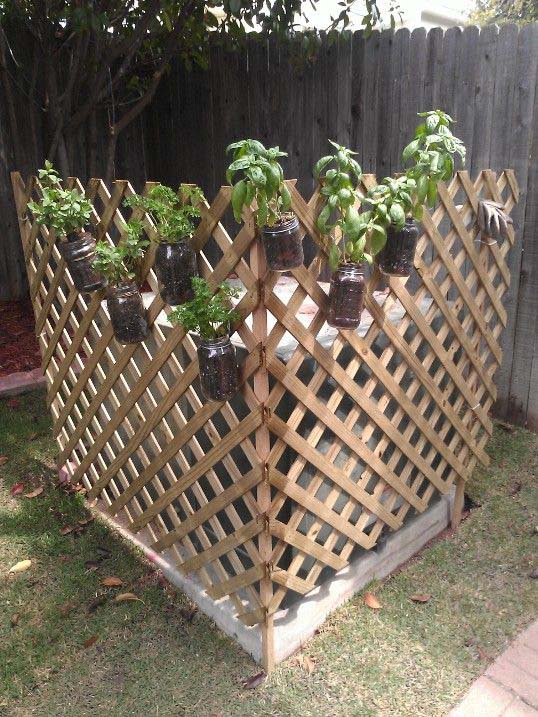
Lattice fencing is cheap. You can buy sections of it at Home Depot.. It also gives you a place to hang all the herbs you grew in mason jars.
Who knew how wildly successful that experiment would turn out?


